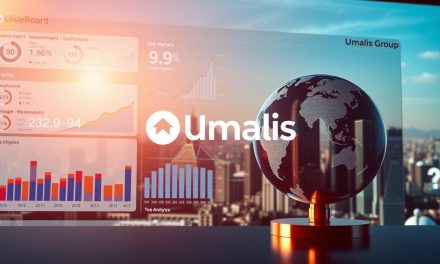Choosing between self-employment and a steady job can feel overwhelming. The decision impacts your income, work-life balance, and future stability. More professionals in France are exploring independent work, with business creation growing by 3% last year.
Both paths offer unique benefits. A traditional role provides predictable paychecks and company benefits. Meanwhile, self-employment brings freedom to choose projects and set your schedule. But which option truly fits your goals?
We’ll examine financial security, social connections, and lifestyle factors. Our guide helps you calculate net income and assess long-term career sustainability. Let’s find the right statut for your professional journey.
Table of Contents
Key Takeaways
- France sees growing interest in independent work opportunities
- Traditional jobs offer stability while self-employment provides flexibility
- Financial security differs significantly between both work models
- Social connections and work-life balance vary by employment type
- Long-term career planning requires careful consideration of both options
Understanding Freelance and Traditional Employment
Over 800,000 professionals in France now operate outside traditional job structures. This shift reflects evolving preferences for autonomy and project diversity. Yet, 88% of workers remain in conventional roles, valuing stability and benefits.
Defining Freelance Work
Freelancers, or indépendants, choose their statut juridique: auto-entrepreneur, EURL, or SASU. They bill clients per project (TJM) and handle Urssaf declarations. Common in tech and creative fields, this activité suits those seeking flexibility.
Defining Traditional Employment
Salariés work under CDI or CDD contracts. Employers manage payroll, social contributions, and benefits like paid leave. Corporate sectors dominate here, offering predictable workflows.
| Aspect | Freelance | Traditional Employment |
|---|---|---|
| Legal Structure | Auto-entrepreneur/EURL | CDI/CDD Contract |
| Payment | Project-based (TJM) | Fixed Salary |
| Administration | Self-managed (Urssaf) | Employer-handled |
| Sector Focus | Tech, Creative | Corporate, Manufacturing |
Hybrid models like portage salarial blend both worlds. They provide freelance flexibility with salaried benefits, appealing to transitioning professionals.
Financial Considerations: Freelance vs Emploi Traditionnel
Money matters differ greatly between independent and salaried work structures. In France, your revenu net depends heavily on social contributions and tax obligations. We’ll break down the numbers to help you compare real earning potential.
Income Structure and Stability
Project-based professionals average €355 per day, but income fluctuates monthly. Salaried workers enjoy fixed salaire payments, with employers covering 22% in social charges. Independent workers manage their own cotisations sociales at 6.7-18% of earnings.
Calculating Net Income
Consider these scenarios for €60,000 annual chiffre affaires versus €50,000 salary:
| Deduction | Independent | Salaried |
|---|---|---|
| Social Charges | €7,200-10,800 | €11,000 |
| Income Tax | €9,000-12,000 | €7,500 |
| Professional frais | €6,000 deductible | Limited options |
| Net Annual | €37,200-43,800 | €31,500 |
The Madelin Law allows independents to deduct training and equipment costs. Salaried professionals have fewer expense claims but benefit from employer-covered benefits.
Tax Implications in France
Independent workers choose between progressive income tax or 22% flat-rate prélèvement libératoire. Quarterly VAT declarations become mandatory when exceeding €34,000 in chiffre affaires.
Remember: Social protections differ too. While cotisations sociales are lower for independents, they cover fewer benefits. Always consult a financial advisor before deciding.
Social Protections and Benefits
Security nets differ significantly between self-employed professionals and salaried workers. In France, your statut determines access to healthcare, retirement plans, and unemployment aid. Indépendants navigate a complex system of cotisations, while employees benefit from employer-managed protection sociale.
Healthcare and Retirement Contributions
Freelancers contribute 8.23% of income for basic retirement, versus 16.35% for salaried workers. Their protection sociale includes limited sick leave (€54/day max via RAM) and requires supplementary insurance. Employees enjoy full coverage, with employers handling charges.
Pension accrual rates also vary. While both systems build retirement rights, indépendants often need private plans to bridge gaps. For healthcare, freelancers pay CFE contributions, averaging €1,200 annually.
Unemployment and Insurance Coverage
Salaried roles include 4.2% unemployment cotisations, granting access to ARE benefits. Freelancers receive $0 coverage unless they explore portage salarial’s hybrid benefits.
- Transitioning employees: ARE eligibility requires 6+ months of prior employment.
- Freelancers: Must budget for private unemployment insurance.
Planning ahead ensures stability, whether you choose independence or traditional roles. Consult a financial advisor to tailor solutions to your needs.
Work Environment and Autonomy

Control over your schedule ranks as the top priority for modern professionals. A Shine 2023 survey reveals 68% of independent workers value this autonomie above other benefits. Your work model dramatically impacts daily structure and long-term satisfaction.
Flexibility in Scheduling and Projects
Remote work dominates independent roles, with 87% operating outside offices versus 34% of salaried professionals. This liberté lets you align work hours with peak productivity periods.
Project-based professionals enjoy diverse missions across industries. However, managing multiple clients requires sharp time organisation skills. Tools like Toggl Track help monitor billable hours across assignments.
Workplace Dynamics and Team Collaboration
41% of independents report collaboration challenges with in-office teams. Unlike hierarchical reporting structures, client relationships demand constant communication adjustments.
Coworking spaces combat isolation while maintaining autonomie. Networking platforms like Shapr keep professional connections active. « Joining a mastermind group transformed my solo workflow » notes Paris-based developer Léa Martin.
Consider your besoins for social interaction when choosing a work model. Hybrid solutions like part-time coworking can balance liberté with team engagement.
Legal Status and Administrative Responsibilities
Administrative duties vary dramatically depending on your professional status in France. Whether you operate independently or through an entreprise, understanding legal frameworks prevents costly mistakes. This section clarifies obligations for both models.
Choosing Your Professional Structure
Independent professionals select their statut juridique based on liability needs and income projections. The auto-entrepreneur system suits beginners with its simplified tax regime and lower social charges.
Key considerations when selecting your structure:
- EI (Entreprise Individuelle): Personal liability with revenue limits (€77.7k services/€188.7k goods)
- SASU: Protects personal assets but requires more complex gestion
- EURL: Combines limited liability with single-member flexibility
Employer Compliance Requirements
Traditional roles shift administrative burdens to employers. French law mandates 42-45% additional costs beyond gross salaries. These cover:
| Requirement | Cost Percentage |
|---|---|
| Social Security Contributions | 28% |
| Unemployment Insurance | 4.2% |
| Training Tax (FPC) | 1% |
| Other frais | 8-12% |
Employers must file monthly DSN declarations with URSSAF. These digital statements consolidate all social and tax reporting.
Independent professionals handle their own invoicing and quarterly VAT filings. Accounting software like QuickBooks simplifies tracking deductible expenses. The FNAE offers free resources for navigating these processes.
« Registering as an auto-entrepreneur took 15 minutes online, but learning tax rules required three consulting sessions. »
Termination processes differ significantly. While CDI contracts require complex dismissal procedures, independent workers simply conclude service agreements. Always document contract terms clearly to avoid disputes.
Career Growth and Skill Development

Professional growth takes different shapes depending on your career path. Structured environments and independent work each offer unique ways to build expérience and expertise. Your choice impacts how you acquire new compétences and demonstrate value to employers or clients.
Corporate Advancement Pathways
Traditional roles provide clear promotion tracks, with 73% of managers preferring internal candidates (LinkedIn 2023). Companies often invest 3-5% of payroll in formation programs, covering certifications like PMP or AWS.
Performance reviews create structured feedback cycles. Many organizations use competency frameworks to guide professional development. These systems help employees map their career progression within the company.
Developing Your Independent Portfolio
Project-based professionals build expérience through diverse projet work. Specializing in high-demand skills like AI tools (+142% growth) or cybersecurity (+89%) makes you stand out to clients.
Consider these strategies for portfolio growth:
- Showcase 3-5 signature projects demonstrating niche expertise
- Leverage CPF funding for continuous education
- Obtain industry-recognized certifications at your own pace
« My portfolio became my resume – each case study proved I could deliver results. »
Both paths require ongoing learning. The key difference lies in who drives the process – your employer or yourself. Evaluate which approach aligns with your learning style and career ambitions.
Work-Life Balance and Mental Health
Mental well-being becomes a critical factor when choosing your professional path. Recent data shows 52% of independent professionals work weekends versus 28% of salaried employees. Finding the right équilibre between productivity and personal life requires tailored approaches for each model.
Combating Isolation in Independent Work
The indépendance of project-based work often comes with social challenges. Many professionals report charge mentale from managing both client relationships and administrative tasks alone. Coworking spaces and professional networks help bridge this gap.
Effective strategies include:
- Scheduling regular in-person client meetings
- Joining industry mastermind groups
- Using collaboration tools like Slack for team projects
Burnout Risks Across Professional Models
Both work structures carry distinct stress factors. Independent professionals face burnout rates of 39%, compared to 31% for office workers. The table below highlights key differences in work patterns:
| Factor | Independent | Salaried |
|---|---|---|
| Average weekly hours | 47 | 50 |
| Income stability stress | High | Medium |
| Schedule control | Full | Limited |
| After-hours availability | Client-dependent | Policy-defined |
Time management becomes crucial for maintaining charge mentale balance. The French professional portal recommends these boundary-setting techniques:
- Color-coded temps blocking for different task types
- Automated email responders outside work hours
- Quarterly digital detox periods
« Mandatory PTO saved my business – returning refreshed always improves my client work. »
Mental health apps like Alan Mind provide support for both professional models. They offer meditation guides and stress management tools tailored to different work environments.
Market Demand and Job Security
Economic shifts reshape professional landscapes, creating new opportunities and challenges. The current marché favors adaptable professionals who understand sector-specific stability patterns. We’ll examine where demand grows fastest and how different work models weather economic storms.
Where Growth Happens
The IT secteur leads with 18% annual growth for independent professionals. Consulting follows at 12%, reflecting businesses’ need for flexible expertise. These fields reward specialized skills with consistent opportunité.
Healthcare maintains steady demand for traditional roles. Corporate positions offer stability during tech sector fluctuations. Consider these certification differences:
- Tech independents: AWS/Google Cloud certs increase day rates by 22%
- Corporate roles: PMP certification accelerates promotion timelines
Weathering Economic Shifts
Recent data shows 6% project cancellations for independents versus 11% layoffs in traditional roles during downturns. Retainer agreements provide sécurité for 63% of established consultants.
Diversification strategies protect against volatility:
| Approach | Independent | Traditional |
|---|---|---|
| Income streams | 3+ client types | Cross-department skills |
| Emergency funds | 6 months expenses | 3 months minimum |
| Skill development | Agile methodologies | Leadership training |
« My retainer clients became anchors during the last recession – they valued continuity over cost-cutting. »
The consulting secteur particularly values professionals who bridge technical and business skills. Crossover competencies like Scrum mastery enhance value for both work models.
Building strong client relationships remains the universal key to stability. Whether through corporate promotions or independent reputation, demonstrated expertise creates lasting career security.
Transitioning Between Freelance and Traditional Work
Navigating career changes requires careful planning and strategic decisions. In France, 63% of successful shifts between employment types use portage salarial as a transitional solution. This hybrid model provides stability during your professional transition period, which averages eight months.
Moving to Independent Work
Registering your statut is the first crucial step. The RCS declaration establishes your legal business identity. Don’t overlook professional liability insurance (RC Pro) – it protects your personal assets from work-related charges.
Leverage corporate experience when pitching services. Highlight transferable skills like project management or client relations. Maintain detailed records of all business expenses for your compte declarations.
Returning to Structured Employment
Adapt your CV to emphasize relevant corporate skills. Frame independent projects as measurable achievements rather than just client work. During negotiations, clarify how your self-employment experience adds unique value.
Understand your rights regarding unemployment benefits. Transition periods may qualify for ARE payments if you meet Pôle Emploi requirements. Always review notice period obligations in your current contracts.
| Transition Aspect | To Independent | To Employment |
|---|---|---|
| Legal Requirements | RCS registration | Contract review |
| Financial Buffer | 6 months minimum | 3 months savings |
| Key Documents | Business license | Updated CV |
| Benefit Transition | Private insurance | Company packages |
« Using portage salarial for my first year gave me confidence to fully transition later. The gradual shift prevented financial stress. »
Whether moving toward independence or structured roles, prepare thoroughly. Consult legal and financial experts to ensure smooth transitions that align with your career vision.
Conclusion: Making the Right Choice for Your Career
Your professional path depends on personal priorities and risk tolerance. Flexibility appeals to those valuing creative control, while stability suits professionals needing predictable income. Neither model fits all – your besoins should guide the decision.
Ask yourself key questions: How much sécurité do you require? Can you manage irregular cash flow? Would hybrid solutions like part-time projects with salaried benefits work better?
Use URSSAF simulators to compare net income scenarios. Consult CPF advisors about training options. Remember, your carrière can evolve – many professionals shift models over time.
The right choix balances liberté with financial safety. Start by assessing your non-negotiables, then build a strategy around them. Your ideal work model awaits.
FAQ
What are the key differences between freelance and traditional employment?
Freelancing offers greater autonomy and flexibility in choosing projects, while traditional employment provides stable income, benefits, and structured career growth. The choice depends on your priorities—independence or security.
How does income stability compare between freelancers and salaried employees?
Salaried employees enjoy predictable paychecks, whereas freelancers experience variable income based on client demand. Budgeting and financial planning are critical for independents to manage fluctuations.
What social protections do freelancers have in France?
Freelancers contribute to healthcare and retirement through URSSAF or portage salarial. However, they lack unemployment benefits unless opting for additional private insurance.
Can freelancers collaborate with teams like traditional employees?
Yes! Many independents work remotely with clients or agencies. Tools like Slack and Zoom facilitate teamwork, though freelancers retain control over their schedules.
What legal steps are required to start freelancing in France?
Register as an auto-entrepreneur or create an EURL/SASU. Each statut juridique has distinct tax and administrative obligations—consult a professional for guidance.
Which offers better career growth—freelancing or traditional jobs?
Traditional roles provide promotions within a company, while freelancers grow by expanding their client base and skills. Both require proactive networking and upskilling.
How can freelancers avoid isolation and burnout?
Co-working spaces, online communities, and setting boundaries between work/personal time help. Traditional employees should also manage workload to prevent burnout.
Is freelancing viable in all industries?
High-demand sectors like tech, marketing, and consulting thrive on freelance talent. Traditional industries (e.g., manufacturing) may offer fewer opportunities for independents.
What’s the process to transition from freelancing back to a salaried role?
Highlight freelance achievements on your resume as project-based experience. Employers value the initiative and diverse skills gained through self-employment.





